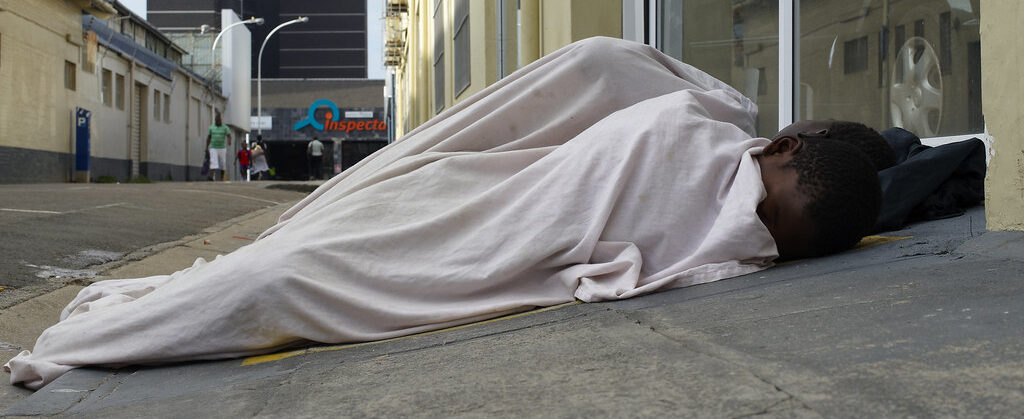By Fahdia Msaka and Siyamthanda Mnyiwana
As we walk down the streets of Makhanda and do our daily errands, we have become accustomed to seeing children, elderly people, and differently-abled individuals living in inhumane conditions. The sight is heartbreaking because these are individuals that are not able to fend for themselves. These are vulnerable members of our society who should be protected from the harshness of this world. Instead, they are begging for their next meal, which has become a normalised sight because of how common it is.
Eastern Cape is notorious for poverty because of the high unemployment rate of 49.9% . The common factors that cause homelessness are social and economic insecurity. The high percentage of Black homeless people is closely linked to the 1913 Land Act, which prohibited Black people from buying and renting land during Apartheid in “whites only” areas. This contributed to landlessness among Black South Africans which is now impacting children.
We have recently just entered winter where temperatures can drop to two degrees celsius. These months are the most unbearable for the children who reside on the streets of Makhanda. The cold winds pierce their skins, and as we go about our daily routines on the streets of Makhanda, we often see them in flimsy, torn clothes and thin blankets. Children’s rights are entrenched in Section 28 of the Bill of Rights in the Constitution of South Africa, and these laws are in the children’s best interests. Arguably South Africa has good laws for protecting children. Yet South African street children are still living in inhumane conditions.
One organisation that deals with child neglect in Makhanda is Child Welfare, founded in 1917, and the second oldest voluntary organization in South Africa. This organization has over 1000 caseloads of children, with hundreds in foster care, and each social worker is assigned to 200 cases. The common reasons for the children of Makhanda to be on the streets include neglect, hunger, parents who are addicted to alcohol and drugs, and children who are being physically abused. The Director of Child Welfare, Martha Thompson, tells us that in 2021, 150 children were diagnosed with severe malnutrition in Sarah Baartman district alone, 122 children were admitted to hospital for malnutrition and 13 children died of malnutrition-related causes.
We are about to experience another winter. Many of us will be with our families in our warm homes, with our warm clothes, food, and blankets. The children on the streets of Makhanda are dreading this winter because they are experiencing the worst.


